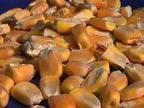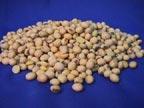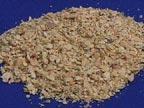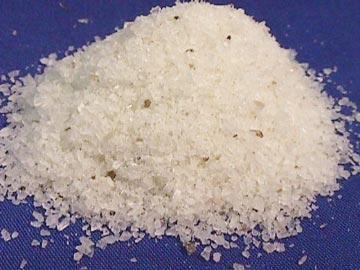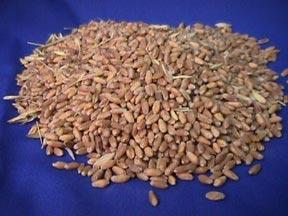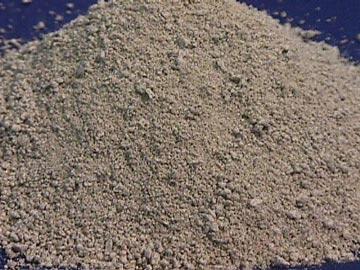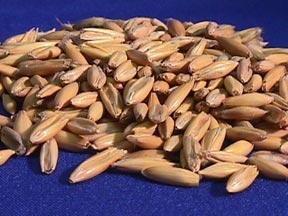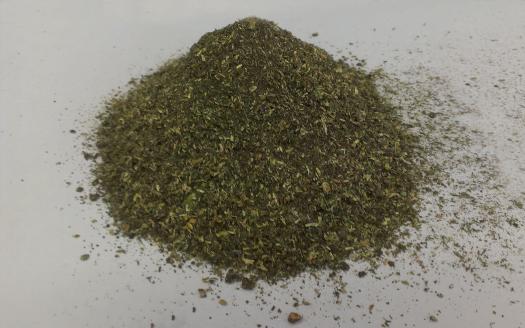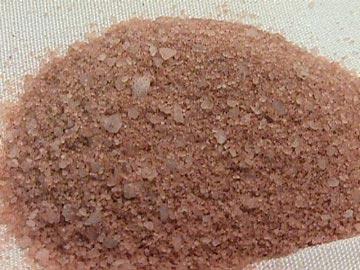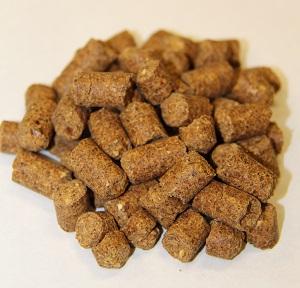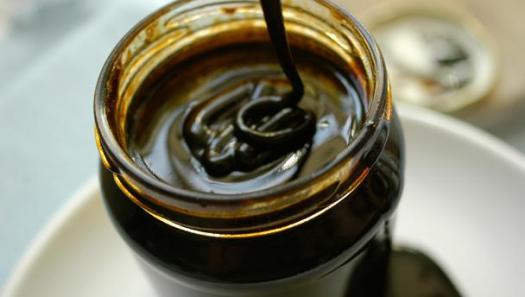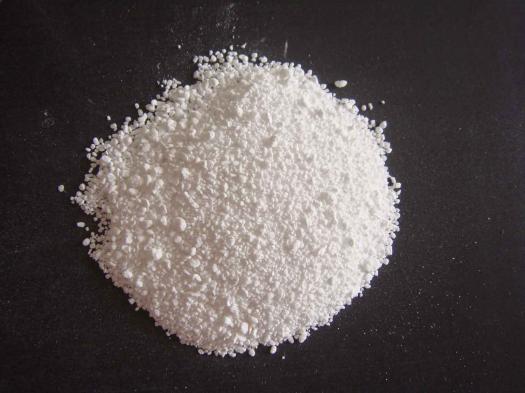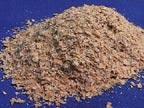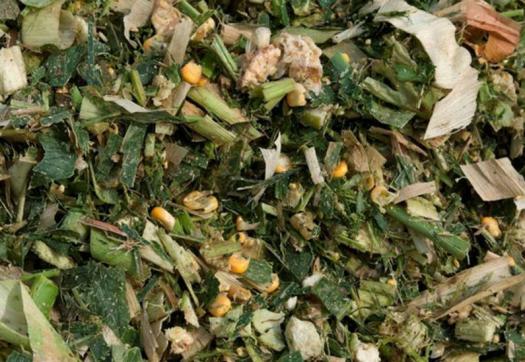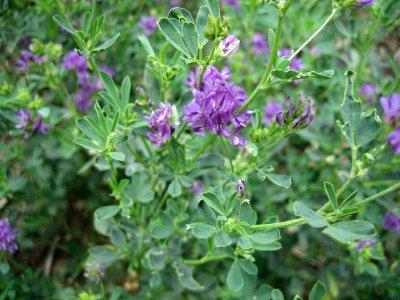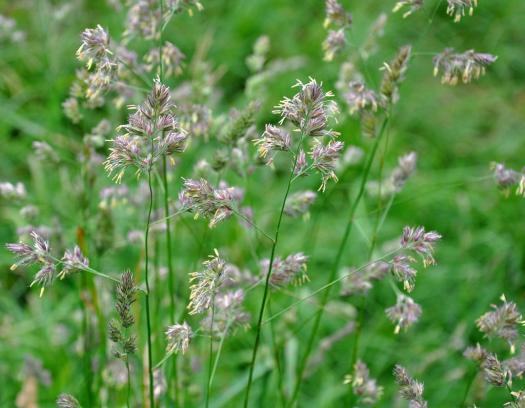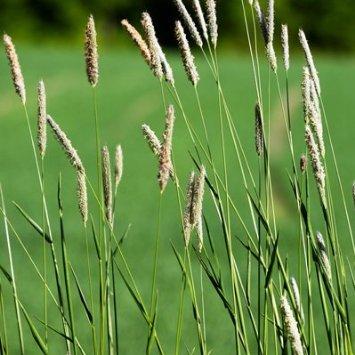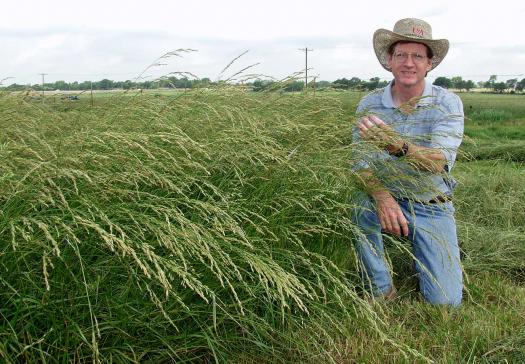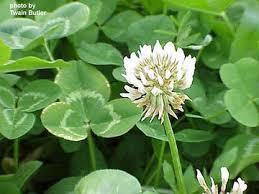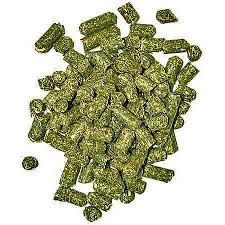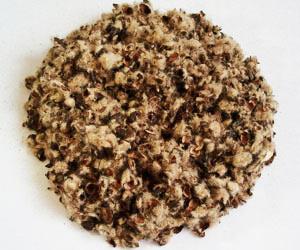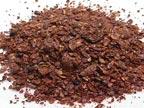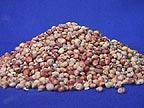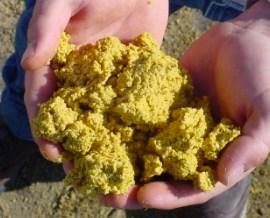Long Ridge Stockman's Feed Identification Quiz

- 1.
Identify the feed shown:
- A.
Whole Corn
- B.
Cracked Corn
- C.
Steamed Corn
- D.
Flaked Corn
Correct Answer
A. Whole CornExplanation
Corn is a concentrate feed that is high in energy.Rate this question:
-
- 2.
Identify the feed shown:
- A.
Whole Soybeans
- B.
Whole Cottonseed
- C.
Soybean Meal
- D.
Cottonseed Hulls
Correct Answer
A. Whole SoybeansExplanation
Soybeans are a concentrate feed. They are high in protein and considered a legume.Rate this question:
-
- 3.
Identify the feed shown:
- A.
Barley
- B.
Wheat
- C.
Oats
- D.
Corn
Correct Answer
A. BarleyExplanation
Barley is a concentrate high in energy.Rate this question:
-
- 4.
Identify the feed shown:
- A.
Soybean Meal
- B.
Blood Meal
- C.
Wheat
- D.
Rye
Correct Answer
A. Soybean MealExplanation
Soybean Meal is simply ground soybeans also high in protein.Rate this question:
-
- 5.
Identify the feed shown:
- A.
Salt
- B.
Dicalcium Phosphate
- C.
Limestone
- D.
Urea
Correct Answer
A. SaltExplanation
Salt is a mineral used to flavor feeds.Rate this question:
-
- 6.
Identify the feed shown:
- A.
Wheat
- B.
Barley
- C.
Oats
- D.
Soybeans
Correct Answer
A. WheatExplanation
Wheat is a concentrate high in energy.Rate this question:
-
- 7.
Identify the feed shown:
- A.
Limestone
- B.
Dicalcium Phopshate
- C.
Salt
- D.
Urea
Correct Answer
A. LimestoneExplanation
Limestone is a mineral used to add calcium to diets.Rate this question:
-
- 8.
Identify the feed shown:
- A.
Dicalcium Phosphate
- B.
Limestone
- C.
Salt
- D.
Urea
Correct Answer
A. Dicalcium PhosphateExplanation
Dicalcium Phosphate is a man-made mineral fed to add calcium and phosphorus to diets.Rate this question:
-
- 9.
Identify the feed shown:
- A.
Oats
- B.
Wheat
- C.
Barley
- D.
Rye
Correct Answer
A. OatsExplanation
Oats are a concentrate and they are high in fiber.Rate this question:
-
- 10.
Identify the feed shown:
- A.
Beet Pulp
- B.
Cottonseed Hulls
- C.
Bone Meal
- D.
Whole Cottonseed
Correct Answer
A. Beet PulpExplanation
Beet Pulp is a by-product fed to livestock as an energy source.Rate this question:
-
- 11.
Identify the feed shown:
- A.
Alfalfa Meal
- B.
Haylage
- C.
Bone Meal
- D.
Alfalfa
Correct Answer
A. Alfalfa MealExplanation
Alfalfa Meal is dried and ground alfalfa fed to livestock. It is high in protein.Rate this question:
-
- 12.
Identify the feed shown:
- A.
Trace Mineral Salt
- B.
Bone Meal
- C.
Blood Meal
- D.
Fish Meal
Correct Answer
A. Trace Mineral SaltExplanation
Trace Mineral Salt is a mineral added to many feeds.Rate this question:
-
- 13.
Identify the feed shown:
- A.
Alfalfa Pellets
- B.
Corn Gluten
- C.
Distillers Grain
- D.
Beet Pulp
Correct Answer
B. Corn GlutenExplanation
Corn Gluten is a byproduct of corn. It actually does NOT have any gluten in it.Rate this question:
-
- 14.
Identify the feed shown:
- A.
Molasses
- B.
Dried Molasses
- C.
Chicken Litter
- D.
Fat
Correct Answer
A. MolassesExplanation
Molasses is used in animal feed for flavor and an energy supplement.Rate this question:
-
- 15.
Identify the feed shown:
- A.
Sodium Bicarb
- B.
Limestone
- C.
Dicalcium Phosphate
- D.
Blood Meal
Correct Answer
A. Sodium BicarbExplanation
Sodium Bicarb is added to feeds to act as a buffer. It has a characteristic powder appearance that may be hard to see in a picture.Rate this question:
-
- 16.
Identify the feed shown:
- A.
Wheat Middlings
- B.
Wheat
- C.
Wood Shavings
- D.
Beet Pulp
Correct Answer
A. Wheat MiddlingsExplanation
Wheat Middlings are a byproduct of wheat added to feeds as an energy supplement. They have a very characteristic "flaky" appearance they may be hard to see in a picture.Rate this question:
-
- 17.
Identify the feed shown:
- A.
Urea
- B.
Sodium Bicarb
- C.
Limestone
- D.
Salt
Correct Answer
A. UreaExplanation
If you missed this one, don't worry it is a hard one. Urea is a protein supplement added to feeds. Easy to confuse it with salt but if you look closely the granules are round which tells you it is not salt. Salt appears as small white rocks. Bicarb is powdery and limestone is grey.Rate this question:
-
- 18.
Identify the feed shown:
- A.
Corn Silage
- B.
Haylage
- C.
Beet Pulp
- D.
Alfalfa
Correct Answer
A. Corn SilageExplanation
Remember Corn Silage is the whole corn plant chopped up.Rate this question:
-
- 19.
Identify the feed shown:
- A.
Alfalfa
- B.
Red Clover
- C.
Timothy
- D.
Orchardgrass
Correct Answer
A. AlfalfaExplanation
Alfalfa is a legume grass identified by its flower and the small leaves. It is high in protein.Rate this question:
-
- 20.
Identify the feed shown:
- A.
Red Clover
- B.
White Clover
- C.
Alfalfa
- D.
Orchardgrass
Correct Answer
A. Red CloverExplanation
Red Clover is a legume and identified by its characteristic "purple ball" and its large leaves. It is high in protein.Rate this question:
-
- 21.
Identify the feed shown:
- A.
Orchardgrass
- B.
Fescue
- C.
Timothy
- D.
Blue Grass
Correct Answer
A. OrchardgrassExplanation
Orchardgrass is a high quality grass used for hay. It is identified by its characteristic seed head.Rate this question:
-
- 22.
Identify the feed shown:
- A.
Timothy
- B.
Orchardgrass
- C.
Fescue
- D.
Blue Grass
Correct Answer
A. TimothyExplanation
Timothy is grown mainly for hay. It is sensitive to high temperatures so grows mainly up north. It is identified by its characteristic seed head.Rate this question:
-
- 23.
Identify the feed shown:
- A.
Fescue
- B.
Timothy
- C.
Blue Grass
- D.
Orchardgrass
Correct Answer
A. FescueExplanation
Tall Fescue is a hardy cool season grass that is suitable for pasture and or hay making. It is drought tolerant due to its root system. Most "old" fescue is infected with a fungus known as endophyte. The endophyte makes the fescue plant more tolerant to environmental stresses but can be harmful to some animals.Rate this question:
-
- 24.
Identify the feed shown:
- A.
White Clover
- B.
Red Clover
- C.
Tall Fescue
- D.
Lespedeza
Correct Answer
A. White CloverExplanation
White Clover is also a legume. Its leaves are smaller and the "flower" is smaller than red clover plus it is white.Rate this question:
-
- 25.
Identify the feed shown:
- A.
Timothy Hay
- B.
Timothy Grass
- C.
Fescue
- D.
Red Clover
Correct Answer
A. Timothy HayExplanation
Timothy Hay. You should always be able to identify it by the characteristic seed head.Rate this question:
-
- 26.
Identify the feed shown:
- A.
Alfalfa Pellets
- B.
Corn Gluten
- C.
Alfalfa Meal
- D.
Alfalfa Cubes
Correct Answer
A. Alfalfa PelletsExplanation
Green pellets? of course it is alfalfa pellets.Rate this question:
-
- 27.
Identify the feed shown:
- A.
Whole Cotonseed
- B.
Beet Pulp
- C.
Cottonseed Hulls
- D.
Wheat
Correct Answer
C. Cottonseed HullsExplanation
Cottonseed Hulls. Probabably more difficult in a picture but beware. Do not get lazy and choose whole cottonseed when it is only the hulls.Rate this question:
-
- 28.
Identify the feed shown:
- A.
Dried Molasses
- B.
Beet Pulp
- C.
Corn Silage
- D.
Molasses
Correct Answer
A. Dried MolassesExplanation
Dried Molasses and yes it is hard to tell from the picture but you should have been able to tell it was none of the other three choices.Rate this question:
-
- 29.
Identify the feed shown:
- A.
Milo
- B.
Corn
- C.
Fescue
- D.
Oats
Correct Answer
A. MiloExplanation
OK so you looked at this one and had no idea, that was the point. When you get to a question and you don't recognize it at all, dont panic! Look at your options and see which one fits the best. This is Milo and I doubt you will ever see it on a test. I just want you to get use to "figuring questions out" when you don't immediately know the answer.Rate this question:
-
- 30.
Identify the feed shown:
- A.
Distiller's Grain
- B.
Whole Corn
- C.
Wheat
- D.
Barley
Correct Answer
A. Distiller's GrainExplanation
Distiller's Grain is a byproduct used in animal feeds. It is a difficult one on many of the senior tests. Usually it should be yellowish and moist or wet so hjust keep it in the back of your mind. Again you probably had no idea what this was but should have figured it out by the elimination of answers.Rate this question:
-
- 31.
Select the ones you like
- A.
Option1
- B.
Option2
- C.
Option3
- D.
Option4
Correct Answer
A. Option1 -
Quiz Review Timeline +
Our quizzes are rigorously reviewed, monitored and continuously updated by our expert board to maintain accuracy, relevance, and timeliness.
-
Current Version
-
Mar 22, 2023Quiz Edited by
ProProfs Editorial Team -
Jan 29, 2016Quiz Created by
Drtommymitchell
 Back to top
Back to top



